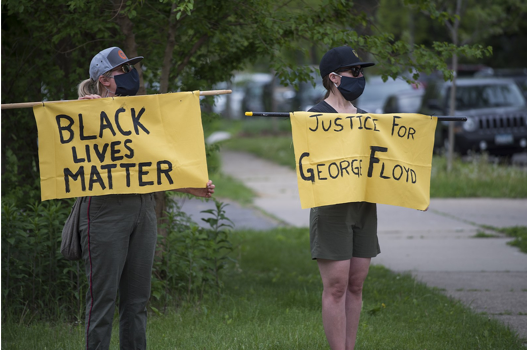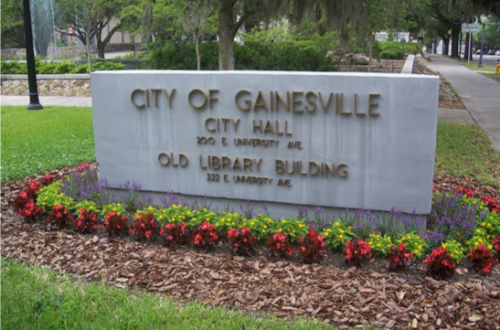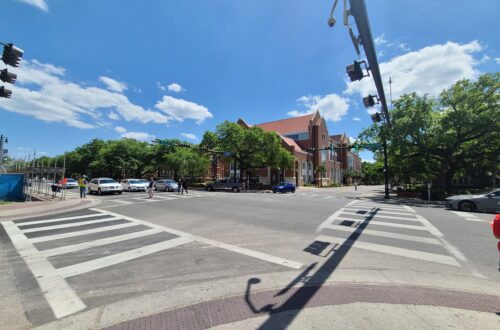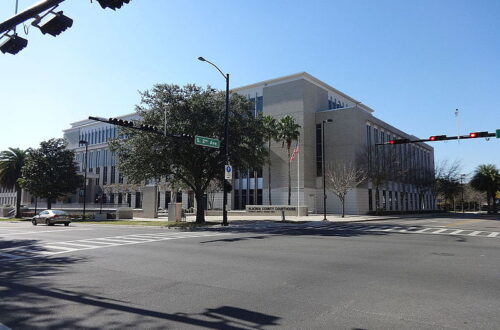Disclaimer: Some names of persons interviewed have only been provided through the use of initials out of concern for their safety.
In the wake of George Floyd’s death by the hands of four police officers in Minneapolis, calls for criminal justice and law enforcement reforms have spread throughout the United States and the world. These cries for justice have taken hold in the form of petitions, donations, protesting and even rioting in some areas.
Although the typical, commonly depicted backdrop for the protests have been in urban centers, the impacts of George Floyd’s death have reached rural areas in the form of protests as well.
In rural areas, population demographics are staunchly different from the demographics of America’s most diverse urban centers. About 21% of rural America is nonwhite, so when the recent protests against police brutality began to take hold it came as a surprise for many to see dissent surging in these rural communities.
Florida represents a duality in communities, with a majority of the most densely populated cities in South Florida and rural towns abundant throughout North Florida.
Citrus County, with a population that is 93% white and only 3% black, exemplifies a lack of diversity within rural communities. Despite this, Citrus County recently held two Black Lives Matter protests that brought together hundreds of community members.
Members of the community, like Jocelyn Standard and Christian Hoover, shared their beliefs on what the protests specifically meant to them.
“The protests represent everything that this country was built on, because this country is governed by the people, for the people, and protests are just one way of communicating what the people need, which is unification in dire times,” said Standard.
“The protests represent unity among everybody in my country, however, I believe the media purposely tries to make any Republican racist and any Democrat an anarchist,” Hoover said.
Safety concerns were frequently on community members’ minds, whether it was due to coronavirus or an outbreak of violence.
With the presence of hostilities and tension escalating throughout social media platforms, protest organizers like E.C. had to account for these factors to ensure the wellbeing of all participants. Fellow protestors, like D.S., took precautionary steps themselves to guarantee their safety.
“We made sure the police knew what we had planned, and since we are still in the midst of a pandemic, we said everyone had to wear face masks to attend,” said E.C.
“I brought my mask, an extra water bottle and a first aid kit because you never know what can happen,” said D.S.
To many in the community, the protests were a step forward toward approaching racism and racial injustice within rural areas. The success of the Black Lives Matter protests in Citrus County was validation of the importance of protesting in rural communities for some local citizens.
“There is hope that the rural communities will begin to unlearn the ideology of racism as we see more protests and civil unrest over racial issues,” Standard said.
The protests in rural America are not limited to Florida, however. In Custer County, Nebraska, protests against police brutality took place at the county capital, which remained peaceful. A few days earlier, in another Nebraska county, Lancaster County, confrontations between protestors and police ensued.
S.H., a resident of both Custer and Lancaster County, presented a dilemma that many rural community members find themselves in, which is when law enforcement members are family.
Law enforcement officers in rural areas are often community leaders, friends, or even family. For many locals, it is difficult to form a strong position on the topic of criminal justice and police reform.
“I was worried the police would retaliate and they did, with tear gas. At the same time, I also have friends and family in the police force and while sweeping changes are needed, I didn’t want to see them harmed either,” S.H. said.
Regardless of location, rural communities all across the United States are experiencing a gradual shift concerning racial issues. For many, the racism depicted on the news and social media resembles their own experiences or observations.
For rural America, racism is a reality for countless individuals, and the protests are evidence of a steadily growing opposition that is continuously considering ways to promote change and reform to the community.
“I am hoping to see total police reform and demilitarization of the police,” D.S. said.
“It will take centuries to ‘cure racism,’ but we can change the fact that predominantly Black communities are over-policed while white neighborhoods are under-policed,” E.C. said. “We can change the targeting of Black people, we can put more Black people and other people of color in positions of power, and so many other things that will better the lives of all Black Americans.”
Two people protesting the death of George Floyd. (Unmodified photo by Fibonacci Blue used under a Creative Commons license. https://bit.ly/3g2rsbY)





